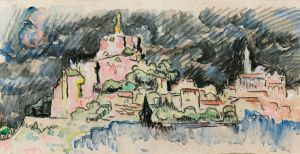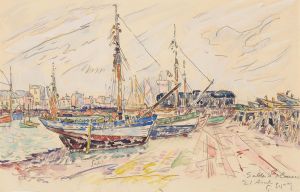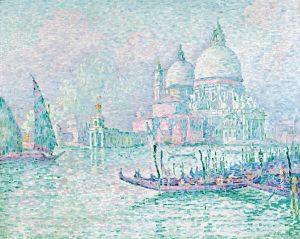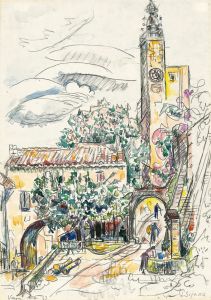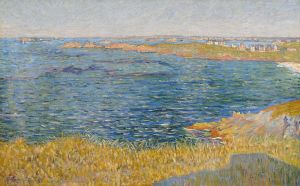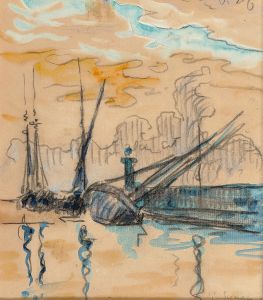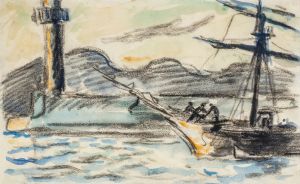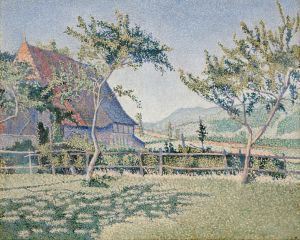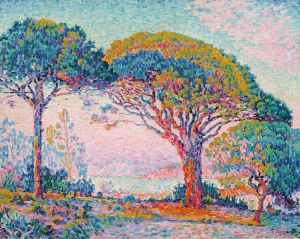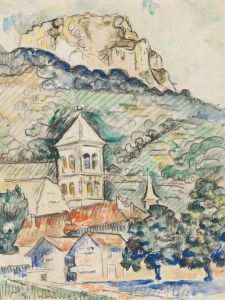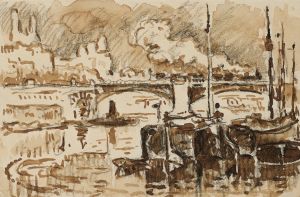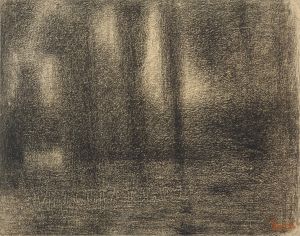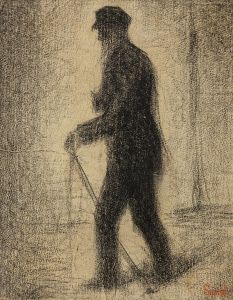
Ships near the Trieux River
A hand-painted replica of Paul Signac’s masterpiece Ships near the Trieux River, meticulously crafted by professional artists to capture the true essence of the original. Each piece is created with museum-quality canvas and rare mineral pigments, carefully painted by experienced artists with delicate brushstrokes and rich, layered colors to perfectly recreate the texture of the original artwork. Unlike machine-printed reproductions, this hand-painted version brings the painting to life, infused with the artist’s emotions and skill in every stroke. Whether for personal collection or home decoration, it instantly elevates the artistic atmosphere of any space.
"Ships near the Trieux River" is a painting by the renowned French artist Paul Signac, a leading figure in the Neo-Impressionist movement. Born in Paris in 1863, Signac was initially influenced by the Impressionists but later became a pivotal figure in the development of Pointillism, a technique characterized by the application of small, distinct dots of color to form an image. This method was developed alongside Georges Seurat, with whom Signac shared a close professional relationship.
The painting "Ships near the Trieux River" exemplifies Signac's mature style, where he employed the Pointillist technique to capture the vibrant interplay of light and color. The Trieux River, located in Brittany, France, is known for its picturesque landscapes and maritime activity, which provided a rich source of inspiration for Signac. The region's natural beauty and the dynamic life of its waterways are reflected in the painting's vivid colors and meticulous composition.
Signac's choice of subject matter often revolved around maritime themes, as he was an avid sailor and deeply fascinated by the sea. His works frequently depict harbors, rivers, and coastal scenes, capturing the essence of the marine environment with a sense of tranquility and harmony. In "Ships near the Trieux River," Signac's use of color and light is particularly noteworthy, as he skillfully blends hues to convey the shimmering effect of sunlight on water and the gentle movement of the ships.
The painting is a testament to Signac's mastery of the Pointillist technique, which he used to explore the scientific theories of color and perception. By placing tiny dots of pure color side by side, Signac allowed the viewer's eye to blend the colors optically, creating a luminous effect that was both innovative and visually striking. This approach was rooted in the scientific studies of color theory by figures such as Michel Eugène Chevreul and Ogden Rood, whose work influenced the Neo-Impressionists' understanding of color interaction.
"Ships near the Trieux River" is part of Signac's broader body of work that celebrates the beauty of the natural world and the serenity of maritime life. His paintings are characterized by a sense of order and structure, reflecting his belief in the harmony of nature and the importance of capturing its essence through art. Signac's contribution to the Neo-Impressionist movement was significant, as he not only advanced the technical aspects of Pointillism but also inspired future generations of artists to explore new ways of seeing and representing the world around them.
Today, Paul Signac's works, including "Ships near the Trieux River," are celebrated for their innovative use of color and their ability to convey the beauty and tranquility of the natural world. His paintings continue to be studied and admired for their technical precision and their contribution to the evolution of modern art. Signac's legacy as a pioneer of Neo-Impressionism remains influential, and his works are held in high esteem by art historians and enthusiasts alike.





